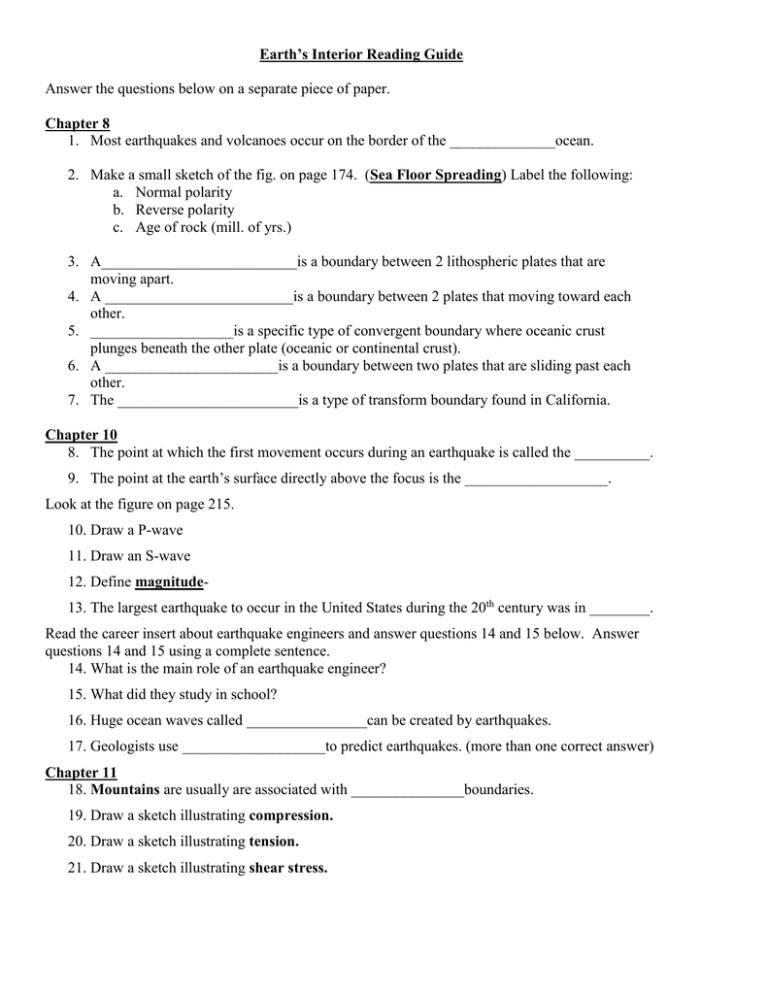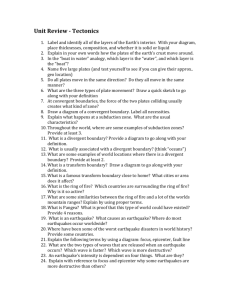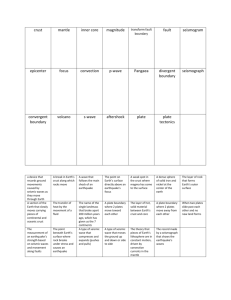Earth’s Interior Reading Guide Chapter 8
advertisement

Earth’s Interior Reading Guide Answer the questions below on a separate piece of paper. Chapter 8 1. Most earthquakes and volcanoes occur on the border of the ______________ocean. 2. Make a small sketch of the fig. on page 174. (Sea Floor Spreading) Label the following: a. Normal polarity b. Reverse polarity c. Age of rock (mill. of yrs.) 3. A__________________________is a boundary between 2 lithospheric plates that are moving apart. 4. A _________________________is a boundary between 2 plates that moving toward each other. 5. ___________________is a specific type of convergent boundary where oceanic crust plunges beneath the other plate (oceanic or continental crust). 6. A _______________________is a boundary between two plates that are sliding past each other. 7. The ________________________is a type of transform boundary found in California. Chapter 10 8. The point at which the first movement occurs during an earthquake is called the __________. 9. The point at the earth’s surface directly above the focus is the ___________________. Look at the figure on page 215. 10. Draw a P-wave 11. Draw an S-wave 12. Define magnitude13. The largest earthquake to occur in the United States during the 20th century was in ________. Read the career insert about earthquake engineers and answer questions 14 and 15 below. Answer questions 14 and 15 using a complete sentence. 14. What is the main role of an earthquake engineer? 15. What did they study in school? 16. Huge ocean waves called ________________can be created by earthquakes. 17. Geologists use ___________________to predict earthquakes. (more than one correct answer) Chapter 11 18. Mountains are usually are associated with _______________boundaries. 19. Draw a sketch illustrating compression. 20. Draw a sketch illustrating tension. 21. Draw a sketch illustrating shear stress.







